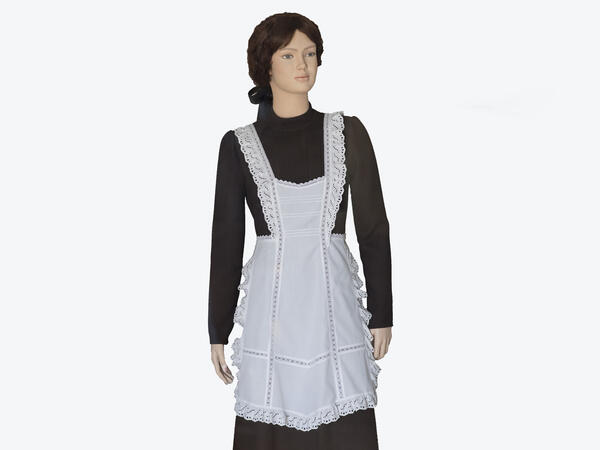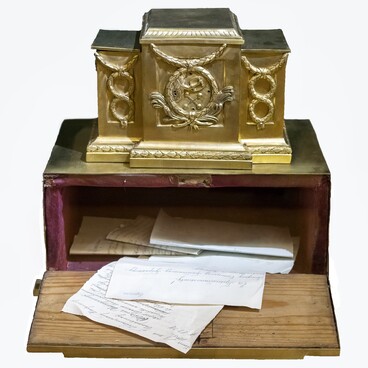The history of girls’ school uniform in Russia dates as far back as 1764. For the first time it was approved by Catherine II for the students of the Smolny Institute: younger girls wore a turtleneck brown dress, the girls who were from 11 to 13 years old had a blue uniform, and the dress of the girls who were from 14 to 16 years old was gray. The festive version was decorated with a colored belt or a white apron. Later, brown dresses also appeared.
The girl’s hair was plaited and tied with black or white ribbons. Before the 1917 Bolshevik revolution, short haircuts were worn either by female students attending courses, senior female students or those schoolgirls who had suffered a serious illness, for example measles or typhus.
A similar uniform, which consists of a long dress and an apron, existed at the beginning of the 20th century in women’s diocesan and city schools. After 1918, it was canceled. Identical gymnasium uniforms for girls were considered a sign of belonging to a certain social class and a symbol of slavery and oppression. However, there was another reason for the abolition of the uniform: many students, due to poverty, could not afford a school outfit. The uniform was reintroduced in 1936.
The gymnasium uniform is displayed in the section of the permanent exhibition “For the Good of the People. Education and Health Care in the Olonets Province in the late 19th — early 20th century”. Thanks to the zemstvo reforms of the second half of the 19th century, a network of medical and educational institutions was opened in the province. As far back as the late 1870s, many parish schools were transferred to zemstvo on the initiative of the clergy. Zemstvo were elected bodies of local self-government in the Russian Empire.
By 1885, out of 249 primary schools in Olonets province, 155 were zemstvo (secular) schools, 46 were parish schools, and 48 were maintained mainly at the expense of the Ministry of Public Education. Girls began to be accepted into classes — previously, education for women had not been considered a priority. Studying in zemstvo schools took three years, and from the early 20th century, this period increased to four years.
Two gymnasiums worked in Karelia; both were in the town of Petrozavodsk. The men’s gymnasium was founded back in 1808, and the women’s gymnasium was opened much later, in 1870.
The girl’s hair was plaited and tied with black or white ribbons. Before the 1917 Bolshevik revolution, short haircuts were worn either by female students attending courses, senior female students or those schoolgirls who had suffered a serious illness, for example measles or typhus.
A similar uniform, which consists of a long dress and an apron, existed at the beginning of the 20th century in women’s diocesan and city schools. After 1918, it was canceled. Identical gymnasium uniforms for girls were considered a sign of belonging to a certain social class and a symbol of slavery and oppression. However, there was another reason for the abolition of the uniform: many students, due to poverty, could not afford a school outfit. The uniform was reintroduced in 1936.
The gymnasium uniform is displayed in the section of the permanent exhibition “For the Good of the People. Education and Health Care in the Olonets Province in the late 19th — early 20th century”. Thanks to the zemstvo reforms of the second half of the 19th century, a network of medical and educational institutions was opened in the province. As far back as the late 1870s, many parish schools were transferred to zemstvo on the initiative of the clergy. Zemstvo were elected bodies of local self-government in the Russian Empire.
By 1885, out of 249 primary schools in Olonets province, 155 were zemstvo (secular) schools, 46 were parish schools, and 48 were maintained mainly at the expense of the Ministry of Public Education. Girls began to be accepted into classes — previously, education for women had not been considered a priority. Studying in zemstvo schools took three years, and from the early 20th century, this period increased to four years.
Two gymnasiums worked in Karelia; both were in the town of Petrozavodsk. The men’s gymnasium was founded back in 1808, and the women’s gymnasium was opened much later, in 1870.



